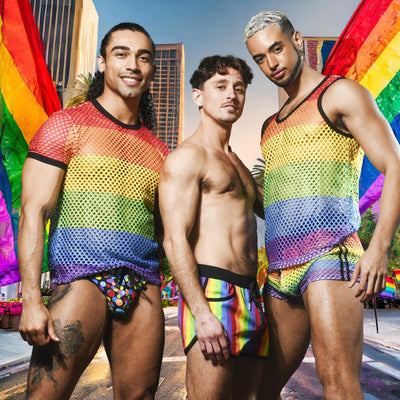Article by Maya Vukovska
The setting: 1981 New York City.
After oppressive previous decades when gay people had to exist in the shadows in order to avoid imprisonment and social ostracism, this decade is about to make an enormous shift towards the blooming of global gay culture. The genie has finally come out of the bottle, and into the streets, clubs, media, arts, even politics…
Whether Season 11 is the best season I cannot say, because everyone has their own favorites, but what I can say is that it's definitely the gayest one so far. Throughout the years, AHS has proven to be one of the queerest TV shows ever. The producers, Ryan Murphy and Brad Falchuk, wouldn’t spare the fan audience a splash of queer sensibility and aesthetics - whether it is a queer actor, a queer storyline, or an occasional queer diva. Season 11, however, feels like an entirely different show - a 2.0 version of the original concept, really. And because nothing leans towards the supernatural, some fans of the anthology accuse the makers of totally forgetting that they are doing AHS, and not American Crime.
But are they?

The vintage vibe
Everybody would agree that the most essential part of replicating a period in a movie/TV series is getting all the details right. And AHS: NYC is getting an A for doing this. We have authentic-looking adult video theaters, era-appropriate cars parked on the streets, sweating mustached men in gym shorts and sleeveless shirts… As for the music, the soundtrack brings back the vibe of the era one hundred percent. All great artists and popular songs from the late ’70s and the early '80s are included: Blondie, Fever, Diana Ross, Kraftwerk, Iggy & The Stooges, and who not…Well, Bach's Concerto No. 1 in Episode 3 is an exception to the rule, but we certainly don’t mind that. The music stands out and makes us continue humming the tune even after the episode is over.
Real life-horror vs. fictional horror
Unlike in the previous seasons, the quintessential villain is not a product of the creators' imagination: there are no vampires, no bug-eyed aliens, no freaks of nature, no witches. This time, the evil maker is as real as he can get, and because of that his character is so much more spine-chilling! Indeed, there is a human killer lurking in Manhattan leaving piles of mutilated bodies of gay men after himself, and yet, the hunt for this mysterious, leather-clad, muscular man called Big Daddy is rather a metaphor for the rising AIDS crisis than it is a hunt for an actual criminal. As it becomes clear from the final episode, Big Daddy didn’t really exist. The most plausible explanation for his constant presence then is that he is but a symbol of homophobia and death.
Evil lives within us
Few people probably know that AHS:NYC uses the controversial William Friedkin’s movie Cruising (1980) as its starting point. Al Pacino plays a New York cop who goes undercover to catch a killer who hunts at gay nightclubs and leather bars. The movie was hugely criticized - there were serious concerns over its homophobic content in times when the LGBTQ community was striding toward visibility and recognition. From a modern perspective, Cruising would have been found guilty of appropriation: its makers use the gay community as an eccentric background for just another serial-killer mystery. What AHS: NYC does better than its inspiration is not succumbing to prejudice, and boldly stitching LGBTQ heritage onto pop-culture horror story-telling.
Murphy and Falchuk have never been afraid to push the red buttons of their audience serving them topics mixed with tons of sex, violence, and taboo breaching. With Season 11, they have once again made us realize that the horrors are real… and they are rooted inside our heads and in our social attitudes.



